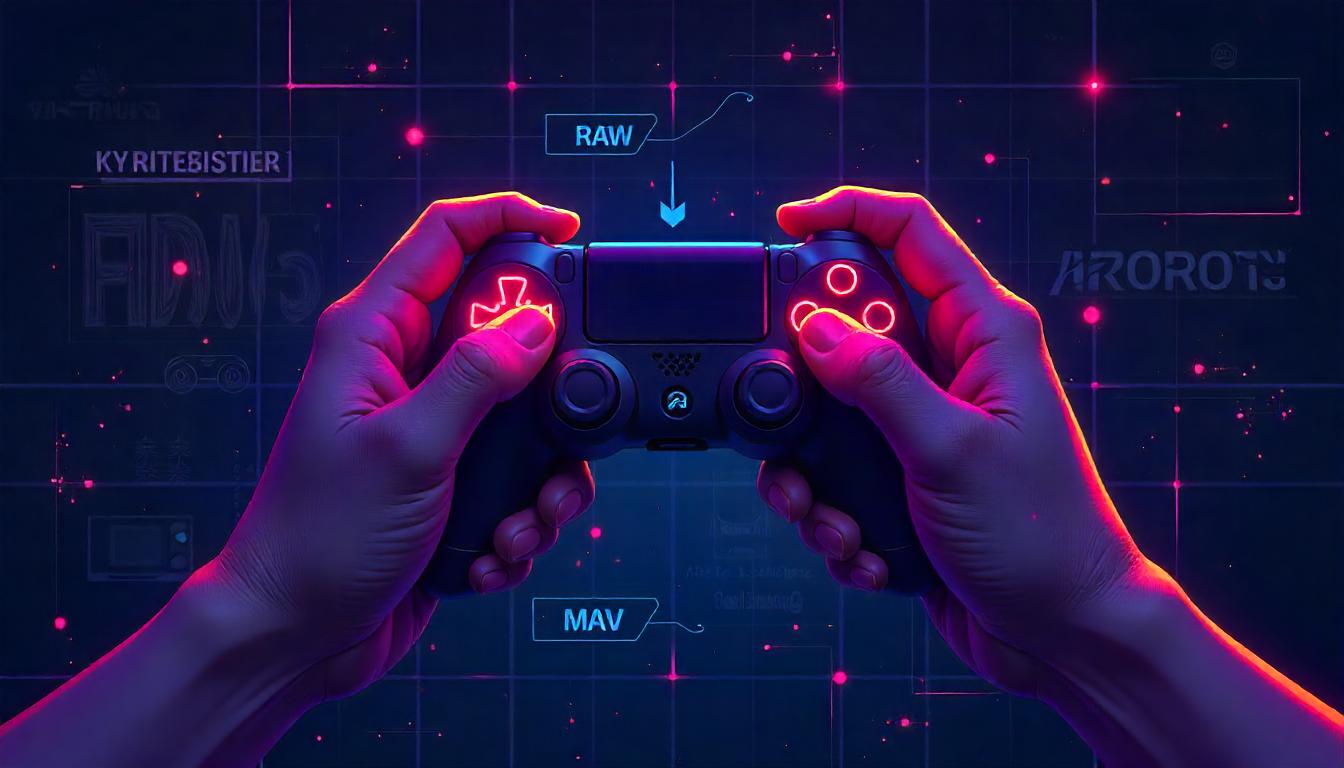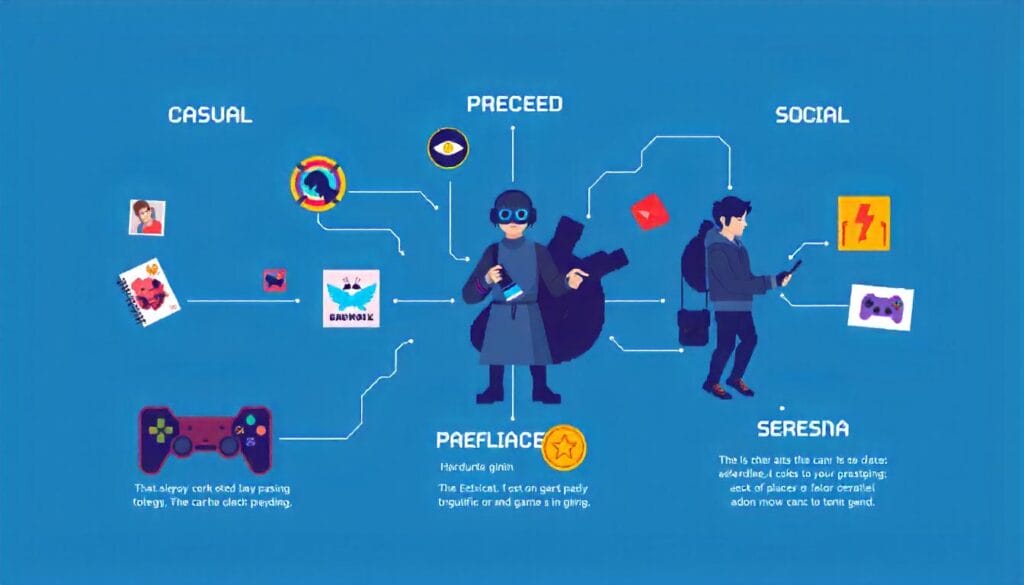From Amateur to Pro: A Deep Dive into Critical Game Design Decisions That Make or Break Success
A comprehensive guide helping aspiring game creators avoid common design mistakes while crafting memorable player experiences
Key Takeaways:
- Balance difficulty curves through data-driven player feedback and extensive playtesting
- Design intuitive control schemes matching player expectations across different platforms
- Maintain unwavering consistency in game mechanics fostering player trust and engagement
Introduction: Why Game Design Mistakes Can Doom Your Project
Creating captivating games requires more than just technical prowess and artistic flair. Many aspiring developers stumble blindly into preventable pitfalls that could’ve been avoided through careful planning. Let’s explore why certain design choices can absolutely wreck player experiences while others boost engagement dramatically.

The Hidden Cost of Poor Game Design
Picture this scenario: You’ve spent countless sleepless nights perfecting your game’s graphics engine and lovingly crafting each asset but players bounce faster than a rubber ball hitting concrete. What went wrong?
Sometimes tiny design oversights snowball into massive problems. A slightly confusing tutorial might discourage newcomers. Inconsistent difficulty spikes could frustrate dedicated fans. These seemingly minor issues combine devastatingly into a perfect storm driving players away.

Deep Dive: The Five Horsemen of Failed Game Design
1. The Difficulty Dilemma: Walking A Razor’s Edge 🎯
Finding perfect difficulty balance resembles performing surgery with boxing gloves – tricky yet crucial. Too easy and players get bored but too hard and they rage quit.
Case Study: Dark Souls vs Candy Crush
Dark Souls built its reputation on brutal difficulty while Candy Crush hooks casual players through gentle progression. Both succeed by understanding their audience perfectly.
Some practical approaches for nailing difficulty:
- Implement dynamic difficulty adjustment
- Create optional challenge modes
- Design clear progression paths
- Add difficulty settings
- Test with varied skill levels
2. Control Scheme Chaos: When Players Fight Your Game
Nothing kills immersion faster than wrestling with unresponsive or confusing controls. Players should feel like virtual extensions of themselves not drunk octopi trying interpretive dance.
Real-World Example: Nintendo’s Lasting Impact
Nintendo’s control schemes became industry standards because they prioritized intuitive design. The A button jumps B button attacks – simple yet effective.
Best practices for control design:
- Follow platform conventions
- Minimize complex button combinations
- Allow control remapping
- Include comprehensive tutorials
- Test with new players regularly

3. Mechanical Inconsistency: Breaking Player Trust
Imagine playing chess but pawns randomly transform into queens – frustrating right? Consistent mechanics build trust while unpredictability breeds confusion.
Failed Game Analysis: No Man’s Sky Launch
No Man’s Sky initially struggled partly due inconsistent mechanics between previews and release. Players felt betrayed when promised features worked differently than expected.
Keys for maintaining consistency:
- Document core mechanics thoroughly
- Test edge cases extensively
- Keep physics predictable
- Maintain power-up behavior
- Follow established genre conventions

4. Feedback Failure: Playing in The Dark
Games must communicate clearly with players through visual audio and tactile feedback. Silent gameplay leaves players guessing about their performance.
Success Story: Overwatch’s Feedback Systems
Overwatch excels at providing clear feedback through:
- Distinctive sound effects
- Visual hit markers
- Score notifications
- Achievement popups
- Status indicators
5. Audience Misalignment: Building for Nobody
Creating games without understanding target players wastes resources. Different audiences want vastly different experiences.
Market Research Matters: Fortnite’s Evolution
Fortnite succeeded by constantly adapting based on player feedback and usage data. They identified their core audience and served them consistently.
Essential audience research steps:
- Create detailed player personas
- Study competitor games
- Gather early feedback
- Track player metrics
- Adjust based on data

Advanced Design Considerations
Psychology of Player Engagement
Understanding human psychology helps craft better games. Consider these factors:
- Flow state requirements
- Reward scheduling
- Social interaction needs
- Achievement motivation
- Learning curves
Technical Implementation Tips
Some practical advice for implementing these concepts:
// Example difficulty scaling code
function adjustDifficulty(playerPerformance) {
let baseLevel = 1.0
let scalingFactor = 0.15
return baseLevel + (playerPerformance * scalingFactor)
}
Testing Methodologies
Effective testing requires structured approaches:
| Testing Type | Purpose | Frequency |
|---|---|---|
| Playtesting | Core gameplay | Weekly |
| User testing | Controls/UI | Bi-weekly |
| Focus groups | Market fit | Monthly |
| Beta testing | Overall polish | Pre-launch |
Common Implementation Mistakes
Over-Engineering Solutions
Developers often create complex systems when simple ones suffice. Remember KISS (Keep It Simple Stupid).
Ignoring Platform Limitations
Different platforms have unique constraints. Mobile games need different controls than PC titles.
Skipping Player Tutorials
Never assume players understand your game intuitively. Clear tutorials prevent early frustration.
Future-Proofing Your Game Design
Scalability Considerations
Design systems allowing future expansion:
- Modular mechanics
- Extensible frameworks
- Data-driven design
- Flexible difficulty curves
- Adaptable content systems
Community Management
Build community engagement through:
- Regular updates
- Player feedback loops
- Community events
- Bug reporting systems
- Feature request tracking
Conclusion: Bringing It All Together 🏆
Successful game design requires balancing numerous factors while avoiding common pitfalls. Focus on creating consistent enjoyable experiences matching your target audience’s expectations.
Remember these core principles:
- Test extensively with real players
- Maintain mechanical consistency
- Provide clear feedback
- Know your audience
- Keep controls intuitive
Start implementing these concepts today. Your players will thank you through increased engagement and positive reviews.
What game design challenges have you encountered? Share your experiences in comments below!
Game Design FAQ
1. What are the most common game design pitfalls that can hurt a game’s success?
Many aspiring game developers fall into avoidable pitfalls that can negatively impact the player experience. Some of the most common mistakes include:
- Poor Difficulty Balance: Making the game too easy can bore players, while excessive difficulty can lead to frustration and abandonment.
- Confusing Control Schemes: Unintuitive or unresponsive controls create a barrier between the player and the game, hindering immersion and enjoyment.
- Inconsistent Game Mechanics: Inconsistent mechanics break player trust and lead to confusion. Players need to understand the rules of the game world for a satisfying experience.
- Lack of Feedback: Games need to communicate clearly with players. Insufficient visual, audio, or tactile feedback leaves players guessing about their actions and performance.
- Misaligned Target Audience: Creating a game without a clear understanding of the target audience leads to a mismatch between player expectations and the actual gameplay.
2. How can developers find the right difficulty balance for their game?
Finding the sweet spot between challenge and accessibility is crucial for player engagement. Developers can achieve a good difficulty balance by:
- Implementing Dynamic Difficulty Adjustment: The game can adjust the difficulty level based on the player’s performance, ensuring a challenging but fair experience.
- Creating Optional Challenge Modes: Offer different difficulty settings or additional challenge modes for players seeking a more demanding experience.
- Designing Clear Progression Paths: Players should feel a sense of progress and accomplishment as they advance through the game.
- Adding Difficulty Settings: Allow players to choose their preferred difficulty level at the start or during the game.
- Testing with Varied Skill Levels: Gather feedback from players with different gaming skills to identify difficulty spikes and areas that need adjustment.
3. What are the best practices for designing intuitive control schemes?
Intuitive controls are essential for a seamless and enjoyable player experience. Key considerations for control design include:
- Follow Platform Conventions: Adhere to established control conventions for the target platform to meet player expectations.
- Minimize Complex Button Combinations: Avoid overwhelming players with complex button combinations, especially for frequently used actions.
- Allow Control Remapping: Give players the option to customize the control scheme to fit their preferences.
- Include Comprehensive Tutorials: Provide clear and concise tutorials to teach players the controls and game mechanics.
- Test with New Players Regularly: Gather feedback from players unfamiliar with the game to identify any control-related issues.
4. Why is consistent feedback important in game design, and how can developers provide it effectively?
Feedback is crucial for player engagement and understanding. Effective feedback systems inform players about their actions, progress, and the game world’s state. Games can provide clear feedback through:
- Distinctive Sound Effects: Use unique and recognizable sound effects to accompany different actions and events.
- Visual Hit Markers: Provide visual cues to indicate successful hits, damage dealt, or interactions with the environment.
- Score Notifications: Display clear and immediate notifications for points earned, achievements unlocked, or progress made.
- Achievement Popups: Announce the completion of achievements or challenges in a visually engaging way.
- Status Indicators: Use clear visual indicators to display the player’s health, resources, or other important stats.
5. How can game developers identify and understand their target audience?
Understanding the target audience is paramount for creating a successful game. Key steps for audience research include:
- Create Detailed Player Personas: Develop fictional representations of the ideal player, outlining their demographics, gaming preferences, and motivations.
- Study Competitor Games: Analyze successful games in the same genre or targeting a similar audience to understand their design choices and player appeal.
- Gather Early Feedback: Conduct playtesting sessions and surveys with potential players to gather feedback on the game’s concept, mechanics, and overall appeal.
- Track Player Metrics: If possible, collect data on player behavior, preferences, and engagement within the game to identify patterns and areas for improvement.
- Adjust Based on Data: Continuously analyze player feedback and data to iterate on the game design and tailor it to the target audience’s needs and preferences.
6. How can developers ensure the longevity and future success of their game?
Several strategies can contribute to a game’s long-term success and adaptability:
- Scalability Considerations: Design game systems that allow for future expansion and content updates, using modular mechanics, extensible frameworks, and data-driven design principles.
- Community Management: Foster an active and engaged community by providing regular updates, listening to player feedback, hosting community events, and creating channels for bug reporting and feature requests.
- Adaptable Content Systems: Implement content creation tools or systems that allow for easy creation and integration of new levels, challenges, or gameplay elements.
- Flexible Difficulty Curves: Design difficulty curves that can be adjusted based on player data and feedback, ensuring a satisfying challenge for a wider range of players.
7. What are some common technical implementation mistakes to avoid in game development?
Technical missteps can hinder a game’s performance and functionality. Some frequent mistakes include:
- Over-Engineering Solutions: Opting for unnecessarily complex solutions when simpler alternatives would suffice can lead to development bloat and maintenance challenges.
- Ignoring Platform Limitations: Failing to consider the unique constraints of the target platform (processing power, memory, screen size, etc.) can result in performance issues or a suboptimal user experience.
- Skipping Player Tutorials: Assuming players will intuitively understand the game’s mechanics without proper tutorials can lead to early frustration and player churn.
8. What are the core principles to keep in mind for successful game design?
Successful game design hinges on several fundamental principles:
- Test Extensively with Real Players: Regular playtesting with diverse players is crucial for identifying gameplay issues, balancing difficulty, and refining the overall experience.
- Maintain Mechanical Consistency: Ensure consistent and predictable game mechanics to build player trust and understanding.
- Provide Clear Feedback: Communicate effectively with players through visual, audio, and tactile feedback, informing them about their actions and progress.
- Know Your Audience: Thoroughly research and understand the target audience’s preferences and expectations to create a game that resonates with them.
- Keep Controls Intuitive: Design control schemes that are responsive, easy to learn, and follow platform conventions for a seamless player experience.

















